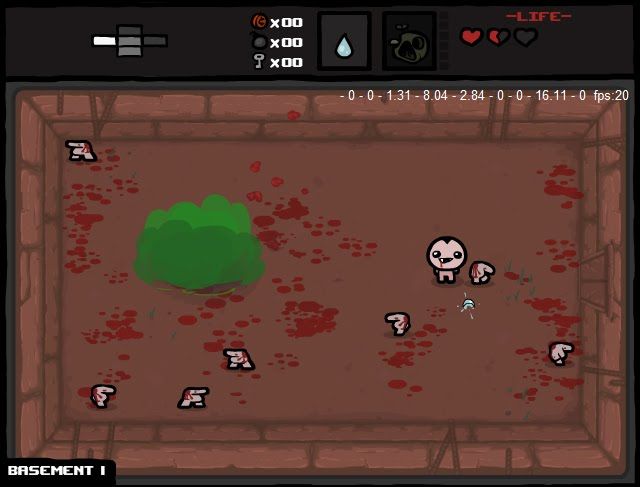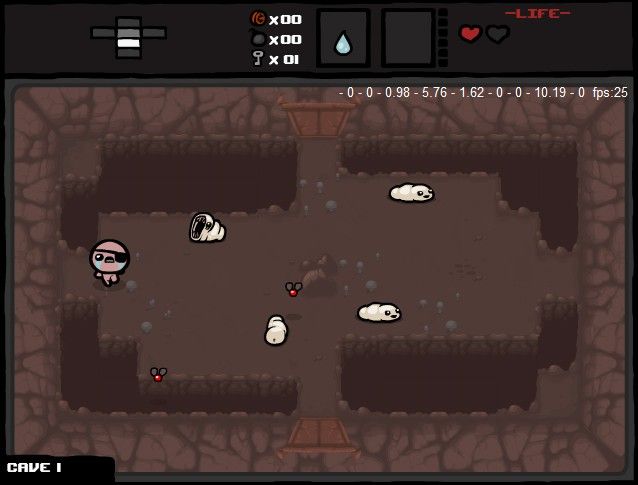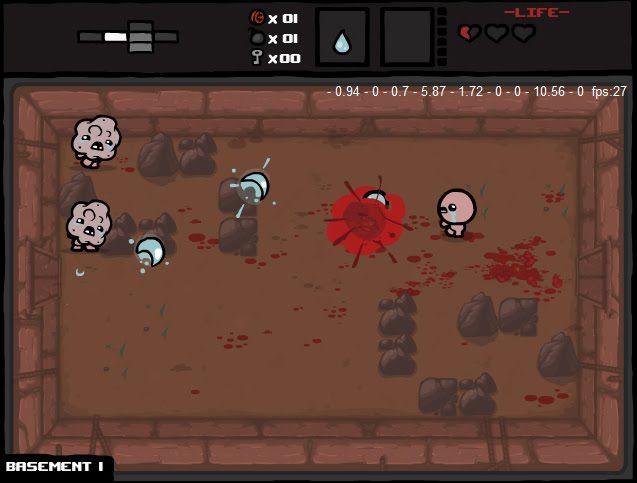The Binding Of Isaac Review
Posted by
FiverBeyond
on
If Sigmund Freud had ever designed a video game, that game would be The Binding Of Isaac. Within minutes of the encountering the first loading screen, the player is wallowing through a madhouse world of tears, pain, excrement, and a horribly evil ‘Mother’ figure. It’s the sort of unusual premise that a small-game developer can afford to experiment with, and although it may not be your particular cup of tea, it’s good to see this experimentation being done. The game has an eye-opening focus on the deepest and darkest parts of human psyche, and yet it treats these in a comedic Saturday-morning cartoon style. Motifs of birth, death, God, Satan, and even a little bit of sexuality are tossed around throughout the game, but all treated so lightly that you can’t help but chuckle as you play.

The Binding of Isaac’s premise is the first thing to grab the player’s attention, simply because it is so bizarre, even while being based on the Hebrew story. Through hand-drawn animations the player is told that Isaac is a toddler brought up by an oppressively religious mother, who becomes convinced that God is talking to her. She eventually determines that Isaac must be killed as a human sacrifice, forcing Isaac to escape into his home’s basement where the action takes place. Binding plays as a top-down action game, with Isaac exploring a series of interconnected dungeons on each level, battling enemies along the way. In the vein of other Rogue-like titles, each level layout is randomly generated: no two playthroughs of the game will play on the same maps. It’s an effective way to keep the game fresh and entertaining, especially since it relies fairly heavily on replay value. Isaac’s only weapon is his tears (yes, his tears), which he can ‘fire’ at his enemies like bullets and upgrade at various points. There is a variety of enemy types, including level bosses and ‘mini-bosses’, and the different dangers encourage the player to creatively use whatever upgrades they are likely to get. Weapons range from honing bullets and charge attacks, to extra health magnificent bat wings (my personal favorite).

One aspect of gameplay that might turn off some players is the fact that, as part of the overly-simplified menus and visuals, special weapons and items are not explained or identified at all. This means that sometimes you’ll need to use them in combat and simply pray that they do something to help; it will take several attempts at a playthrough before you know what to expect from your collection of goodies. Even then, there are some items that always have random effects. This potshot item testing works in context, as it feels like a development of themes through gameplay, but it’s a potential hang-up nonetheless.
A bigger issue is the fact that there is no way to save your progress: once dead, you’ll need to start all the way back at the beginning. However, with such short levels and fast gameplay, this isn’t as bad as it may sound; The Binding of Isaac is meant to be played fast and fierce, beaten in one shot or not at all. Furthermore, with such a wide range of randomized items and power-ups, the game stays intriguing and fun whether it’s your first attempt or your hundredth. This makes ‘The Binding of Isaac’ an absorbing combination of extreme factors that work well together: randomized dungeons, action-focused gameplay, and an utter lack of save points keeps the game short and sweet while staying challenging. The first few hours of Binding of Isaac are spent simply getting a little bit further with each attempt, and that mental urge to immediately start over as soon as the death screen pops up is a great hook. It’s the excellent replayability of the game that makes such harsh measures as unexplained powerups and one-shot gameplay not only acceptable, but absolutely necessary for the game. It isn’t your job to worry about extra lives or Identify scrolls; it’s your job to cry your way to freedom through the hellhole basement of nightmares.

Like the story, the visuals in The Binding of Isaac are a vibrant mix of the horrific and the comedic. All enemies and obstacles are drawn in a classic Flash cartoon style, but it’s what they depict that really jars you: maggots, flies, piles of poo, and what can only be described as demon fetuses. Power-ups and items follow this macabre pattern – for example, the wire coat hanger power-up, which pries Isaac’s eyelids open to allow for more fire power. It’s altogether an exciting mixture of the revolting and the laughable – a pleasantly simplified visual style that hearkens back somewhat to Super Meat Boy, a game the developers were previously involved with. The music in game reinforces the themes of the story and visuals, with overly dramatic electric guitar strums or violin screeches hinting at the demonic or horrific themes. Otherwise, the sounds in the game are what you would expect from any similar, small Flash game, but thankfully don’t distract from any of the action.
Playing through The Binding of Isaac is a little like downing an in-store sample of Tabasco sauce: not particularly deep or filling, but powerful while it lasts and well worth the slight trouble it took to get into it. The gameplay is engaging and challenging, but the bold direction for story and aesthetic is where the real interest lies. Especially for such a low price, The Binding of Isaac is a fun experiment in casual gaming, and is worth a try if you think you can stomach it.
